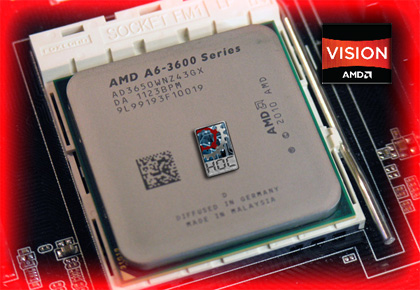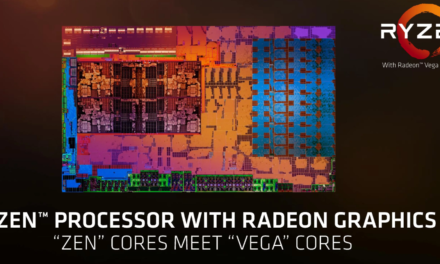
Tried: AMD A6-3650 APU and A8-3850 APU - this is not the real article


AIDA64 Extreme Edition 1.80 memory speed measurement:


AMD A6-3650 APU (2600 MHz) + ASUS F1A75-V PRO AMD A6-3650 APU OC (3640 MHz) + ASUS F1A75-V PRO
AMD A8-3850 APU + GIGABYTE GA-A75-UD4H AMD A8-3850 APU + ASUS F1A75-V PRO
AMD Phenom II X4 970 BE 2,9 GHz + ASUS M5A97 EVO AMD Phenom II X4 970 BE 3,5 GHz + ASUS M5A97 EVO
Core i7-2600k 2,9 GHz 4/4 + ASUS P8Z68-V PRO Core i7-2600k 3,3 GHz 2/4 + ASUS Maximus 4E
AIDA64 cache speed test (read test suite):
AMD A8-3850 APU + GIGABYTE GA-A75-UD4H AMD A8-3850 APU + ASUS F1A75-V PRO
Core i7-2600k 2,9 GHz 4/4 + ASUS P8Z68-V PRO Core i7-2600k 3,3 GHz 2/4 + ASUS Maximus 4E


AMD Phenom II X4 970 BE 3,5 GHz + ASUS M5A97 EVO AMD A6-3650 APU + ASUS F1A75-V PRO
Consumption and warming:
Of course, we couldn’t go past the configurations without examining them in terms of consumption as well. In the first step, we compared systems with graphics integrated into the processor, which meant the A8-3850 with two motherboards, and the Core i7-2600k limited to 4 cores and 4 threads (with HT off, without Turbo Boost) on the ASUS P8Z68 -V PRO tab. The values were measured with our standard, simple plug-in wattmeter, so they can still be considered as indicative rather than laboratory, accurate measurements.

Thus, the two processors (even if they are not direct competitors to each other) can be compared on the same core number and clock, in both cases in the company of IGP. Well, there seem to be some sort of miracle with the K12, as we saw lower values on the A3-11-based systems than on the Intel Sandy Bridge flagship, even when unloaded, under Blu-ray playback and 8Dmark3850. This is probably due to the Radeon HD 6550D, which is energy efficient, and compared to the fact that it is much stronger on paper than Intel's HD Graphics 3000, it doesn't eat much more than FurMark, the difference is only 15 -16 watts.
The A6-3650 APU on paper is in the same 100-watt TDP class as the A8-3850, yet we expected to encounter slightly more subdued values than our big brother, the A8-3850. This conjecture was nicely confirmed, as we measured the lowest values in all respects with the A6-3650. The difference was around 10 watts on average compared to the larger Llano, but in the case of Furmark, for example, we found an even bigger difference.

The line of positive surprises continued even when a Radeon HD 6790 was inserted into the system as a discrete graphics card - at which point, of course, the IGPs became inactive. Unloaded, the Llano was able to maintain its lead and also ticked off the Phenom II X4 970 BE, as well as the Core i7-2600k, which had joined in the meantime. With an AIDA64 load, the order of the world is already being restored, here the CPU cores are receiving a rough load, and this is already reflected in the measured values. There is so much good news that seeing the Phenom II, I managed to carve 12-13 watts at the same clock. Interestingly, for Blu-ray playback, the 3,3k set to 2600 GHz with the M4E board ran quite a bit, while the same CPU at 2,9 GHz with + 2 cores consumed the least in the P8Z68-V Pro. Of course, the focus is on the A8-3850, which doesn’t produce bad values here either, if not to a huge extent, but it has managed to move forward over the previous generation, even though we know that there is virtually no difference in architecture. Under 3DMark11, the field was pretty much the same, surprisingly, the quad-core Phenom banging at 2,9 GHz won that number. Under FurMark, the A8-3850 shines again, it reaches with the least energy, followed by the 2,9k working at 2600 GHz. It’s no big surprise that the X4 970 BE absorbs most of the network.
After measuring the consumption with IGP, we expected that Radeon HD 6790 would also demonstrate less energy hunger. This is also the case, as it eats significantly less than the A8-3850 in this test as well. This measurement also showed that tuning and voltage boosting have a serious price on the altar of consumption, as at 3640 MHz it jumped to the forefront everywhere except FurMark and Blu-ray, meaning it consumed most of its energy.
AMD A8-3850 APU
AMD A8-3850 APU
As you can see, the support of the A8-3850 is not completely perfect yet (we got 9 degrees for the minimum value), but it seems that the factory cooler added to the processor, resting in the box, was able to cope with the task entrusted without any problems, its use did not result in any instability, without a hitch, and compared to that he did his job quite softly.
A8-3850 + Radeon HD 6550D
The IGP sensor also transmitted surprisingly low values to the MSI Afterburner, according to the program, the idle Radeon HD6550D warmed to 11 degrees and then warmed up to 43 degrees under load. If the latter value is correct, it is to be commended again, especially by using the simple factory cooler supplied with the processor during the test.

AMD A6-3650 APU

AMD A6-3650 APU

AMD A6-3650 APU + Radeon HD 6530D
For the A6-3650, we already attached our usual Scythe cooler to the APU, since this unit came in "tray form". The AIDA64 loading and measurement was carried out at the base clock during monitoring. Accordingly, the Scythe monster handled it without any problems, the APU heated up to a maximum of 38 degrees, if we can believe the reading. MSI Afterburner was already in more trouble with the Radeon HD 6530D IGP, let's just say that we will return to the temperature data in a later test.




























